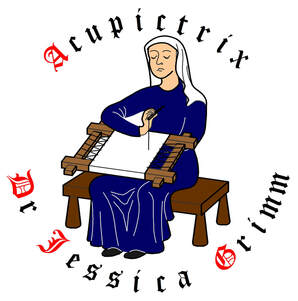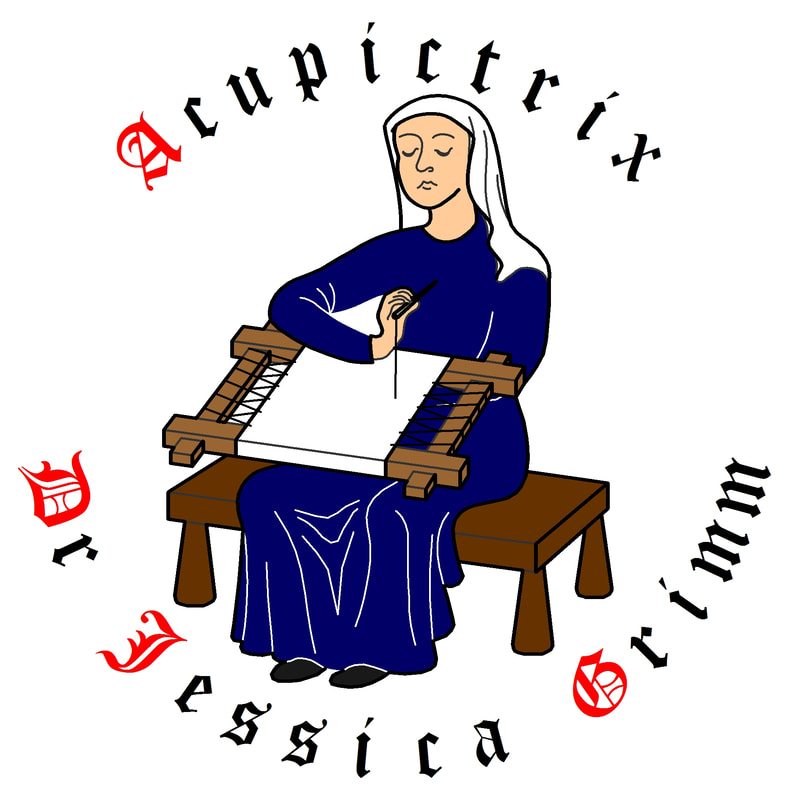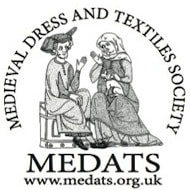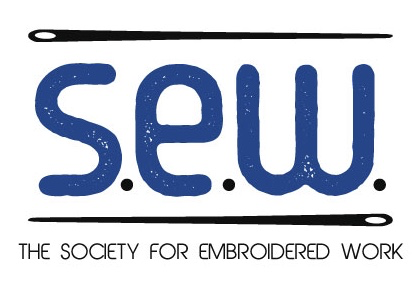|
As I am originally from the Netherlands and learned to do goldwork at the Royal School of Needlework in London, I was, until a couple of years ago, not very familiar with all the medieval goldwork embroidery that has survived in Germany. There is a lot! But it is sadly almost always published in German. Not very accessible for the worldwide embroidery community or indeed embroidery researchers from outside of Germany. The German embroidery community is very small and mainly interested in cross-stitch and whitework. I am thus sometimes a bit at a loss for whom these magnificent German publications were actually written. They are often full of very technical details. Things makers want to know, not necessarily your average archaeologist or (art) historian. Last year, I uncovered another one of these brilliant publications on the textile finds from the imperial and episcopal graves of Speyer Cathedral. Let me introduce you to some pretty amazing pieces! Firstly, we have the mantle of Philip of Swabia (1177-1208) made in the last quarter of the 12th or the early 13th century. On it are two medallions with goldwork embroidery. One shows Christ, the other Mary. The mantle's fabric and probably also the embroideries came from Byzantium. Philip had married Irene Angelina (1181-1208), a daughter of Byzantine emperor Isaac II Angelos (1156-1204). He thus had easy access to textile products from Byzantium. The embroidery is executed on a piece of fine samite with silk and gold threads. The goldwork is quite fine with about 40 parallel threads per centimetre. Interestingly, the gold threads are couched in normal surface couching, apart from the turns. These are done in underside couching (for instance also seen in the Reitermantle in Bamberg (DMB Inv.Nr. 3.3.0003)). For years, this combination of normal surface couching with a turn in underside couching eluded me. Why did they do that? When it came up in a discussion with Cindy Jackson recently, she immediately came up with a perfectly logical explanation: the turn is neater/easier. I had never thought of that. Although I know that many people struggle with making neat turns, I never found them hard or daunting to do. Doing an underside couching stitch with silk comes with the risk of breaking your couching thread. However, I perfectly understand that it is probably worth the risk when turns are not your forte. Mystery solved! Another spectacular find is a pair of episcopal socks from one of the bishop's graves. The embroidery is completely executed in underside couching. It is therefore possible that these luxury socks were made in England around the year 1200. However, as we have seen in the contemporary mantle of Philip of Swabia, the underside couching technique was by no means exclusively practised in England. My gut feeling is that underside couching = Opus anglicanum = England is sometimes a little too eagerly applied for goldwork embroidery found in continental Europe.
Apart from describing the original excavations in the early 20th century, the publication also has very good chapters on medieval textile techniques (weaving, finger looping and tablet weaving). Another chapter compares the finds from Speyer with contemporary finds from elsewhere. The chapters on the scientific investigations of the finds are also very good with a whole chapter on the gold threads. If you are interested in archaeological textiles (some with goldwork embroidery), this book is for you. As the book is a little older, you can sometimes find it second-hand. However, you might be able to get it through a library. Literature Herget, M., 2011: Des Kaisers letzte Kleider. Neue Untersuchungen zu den organischen Funden aus den Herrschergräbern im Dom zu Speyer, Historisches Museum der Pfalz Speyer.
14 Comments
|
Want to keep up with my embroidery adventures? Sign up for my weekly Newsletter to get notified of new blogs, courses and workshops!
Liked my blog? Please consider making a donation or becoming a Patron so that I can keep up the good work and my blog ad-free!
Categories
All
Archives
July 2024
|
Contact: info(at)jessicagrimm.com
Copyright Dr Jessica M. Grimm - Mandlweg 3, 82488 Ettal, Deutschland - +49(0)8822 2782219 (Monday, Tuesday, Friday & Saturday 9.00-17.00 CET)
Impressum - Legal Notice - Datenschutzerklärung - Privacy Policy - Webshop ABG - Widerrufsrecht - Disclaimer
Copyright Dr Jessica M. Grimm - Mandlweg 3, 82488 Ettal, Deutschland - +49(0)8822 2782219 (Monday, Tuesday, Friday & Saturday 9.00-17.00 CET)
Impressum - Legal Notice - Datenschutzerklärung - Privacy Policy - Webshop ABG - Widerrufsrecht - Disclaimer








 RSS Feed
RSS Feed